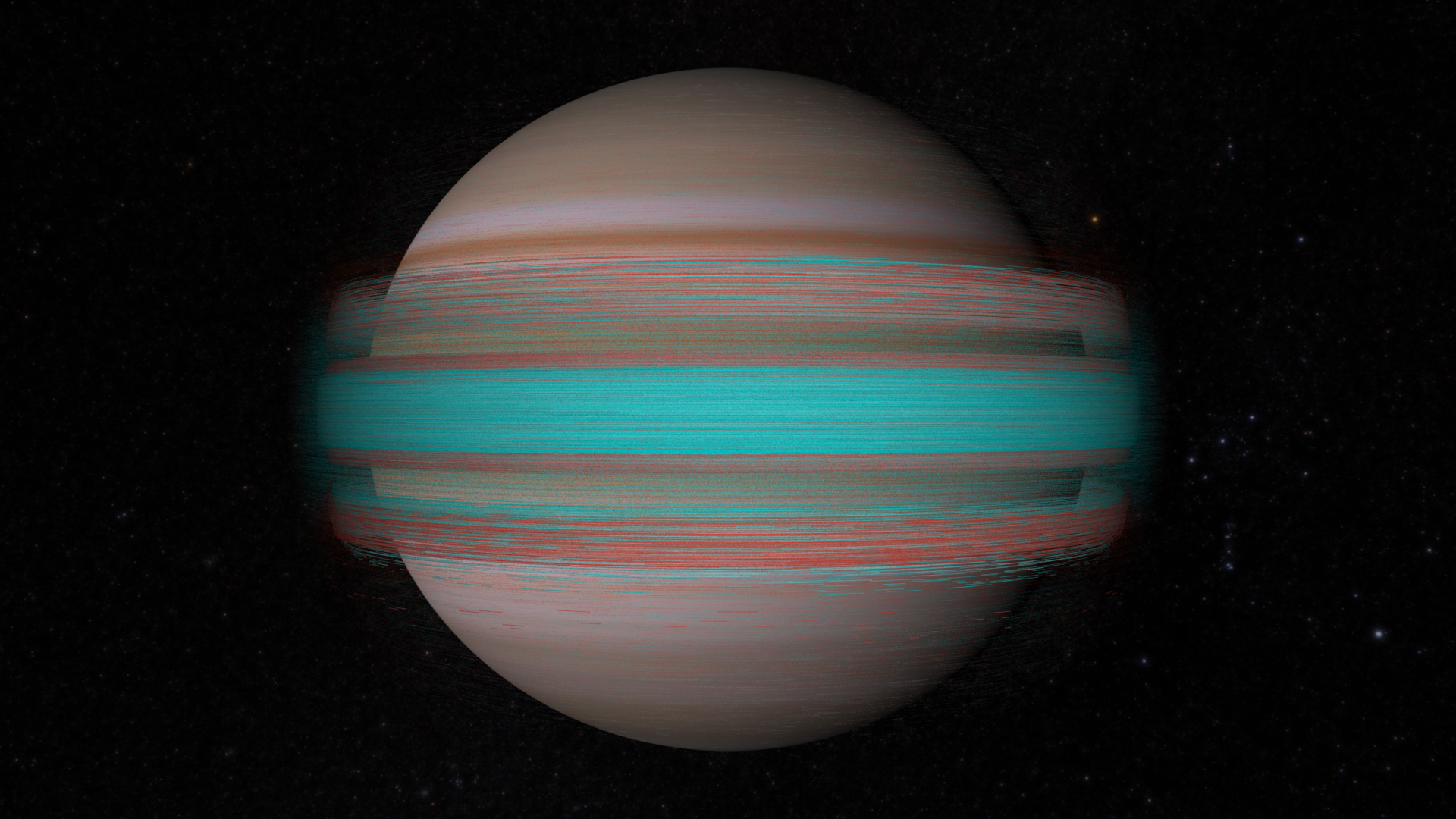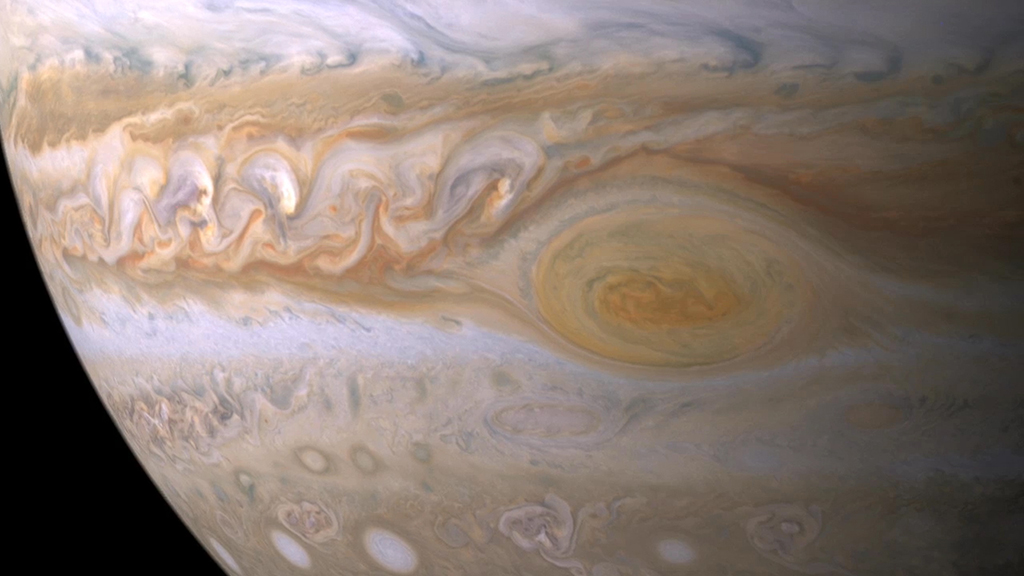Jupiter's Hot Spots
Jupiter's bright Equatorial Zone swirls with dark patches, dubbed "hot spots" for their infrared glow. These holes in the ammonia clouds at the top of the atmosphere allow a glimpse into Jupiter's darker, hotter layers below. In 1995 NASA's Galileo spacecraft dropped a probe directly into a hot spot, taking the first and only in situ measurements of Jupiter's atmosphere. Now, movies recorded by NASA's Cassini spacecraft reveal that hot spots are not just local weather phenomena, but are in fact linked to much larger-scale atmospheric structures called Rossby waves.
NASA postdoctoral fellow David Choi discusses his study of dark features in Jupiter's atmosphere called "hot spots," and their connection to large-scale atmospheric waves.
For complete transcript, click here.
For More Information
See the following sources:
Credits
Please give credit for this item to:
NASA's Goddard Space Flight Center and Cassini Mission Team, NASA JPL
-
Animators
- Tom Bridgman (Global Science and Technology, Inc.)
- Greg Shirah (NASA/GSFC)
- Ernie Wright (USRA)
- Trent L. Schindler (USRA)
- Lori Perkins (NASA/GSFC)
-
Video editor
- Dan Gallagher (USRA)
-
Interviewee
- David Choi (Oak Ridge Associated Universities (ORAU))
-
Producer
- Dan Gallagher (USRA)
-
Scientist
- David Choi (Oak Ridge Associated Universities (ORAU))
-
Videographer
- Rob Andreoli (Advocates in Manpower Management, Inc.)
Release date
This page was originally published on Thursday, March 14, 2013.
This page was last updated on Wednesday, May 3, 2023 at 1:52 PM EDT.
Missions
This visualization is related to the following missions:Series
This visualization can be found in the following series:Tapes
This visualization originally appeared on the following tapes:-
Jupiter's Hot Spots
(ID: 2012099)
Thursday, March 14, 2013 at 4:00AM
Produced by - Dan Jacob (Global Science and Technology, Inc.)
Papers used in this visualization
Datasets used in this visualization
-
Cassini/Jupiter imagery [Cassini: Imaging Science Subsystem]
ID: 645Cassini/Jupiter imagery
This dataset can be found at: http://ciclops.org/
See all pages that use this dataset
Note: While we identify the data sets used in these visualizations, we do not store any further details, nor the data sets themselves on our site.

